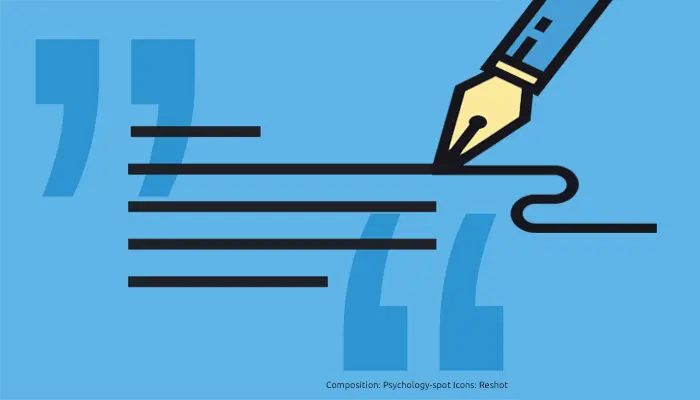
Panic Attack
Period of extreme anxiety and physical symptoms such as heart palpitations, shakiness, dizziness, and racing thoughts. Initial attacks are often reported to feel like a heart attack due to the heart palpitations. A medical exam should be conducted to rule out any such condition.
Parallel Form Reliability
The correlation coefficient determined by comparing the scores of the two similar measuring devices (or forms of the same test) administered to the same people at one time.
Parameter
A summary value of a specific population characteristic (e.g., mean age, standard deviation of IQ’s, median income)
Parasympathetic Nervous System
A subsystem of the Autonomic Nervous System (ANS) that returns the body to homeostasis.
Parietal Lobe
One of four lobes of the brain. Contains the Somatosensory Cortex d is therefore involved in the processing of touch, pressure, temperature, and pain.
Peak Experience
A life experience considered paramount due to the feeling of unity with the world.
Pearson Product-Moment Correlation
A correlation statistic used primarily for two sets of data that are of the ratio or interval scale. The most commonly used correlational technique.
Penis Envy
In Psychoanalytic Thought, the desire of girls to possess a penis and therefore have the power that being male represents.
Percentile Rank
Percentage of scores falling at or below a specific score. A percentile rank of 95 means that 95% of all of the scores fall at or below this point. In other words, the score is as good as or better than 95% of the scores.
Perception
The process of organizing and using information that is received through the senses.
Perceptual Constancy
The ability to perceive objects as unchanged despite the change noticed by the senses (e.g., the ability to understand and see buildings as remaining the same height even though they appear larger as we get closer to them).
Perfect Correlation
A correlation of either +1.0 or -1.0. A perfect correlation is extremely rare and when it occurs means that predicting one score based on another score is perfect or without error.
Person Centered Therapy
The therapeutic technique based on humanistic theory which is non-directive and empathic.Personality
The stable set of individual characteristics that make us unique.
Personality Disorder
A maladaptive and stable set of individual characteristics that cluster to form a recognized disorder.
Permissive [parents]
Parenting style consisting of very few rules and allowing children to make most decisions and control their own behavior.
Persuasion
The deliberate attempt to influence the thoughts, feelings or behaviors of another.
Phallic Personality
Stemming from the Phallic stage, a child who becomes fixated may develop a personality characterized by selfishness, impulsivity, and a lack of or reduced ability to feel empathy.
Phallic Stage
Freud’s third stage of psychosexual development where the primary sexual focus is on symbolism of the genitals.
Phi Correlation
A correlational technique used when both variables are binary (Example true/false, yes/no, or on/off)
Phi Phenomenon
The perception of motion based on two or more stationary objects (e.g., the perception of chaser lights brought about by different lights blinking at different times).
Phobia
An intense fear of a specific object or situation. Most of us consider ourselves to have phobias, but to be diagnosable, the fear must significantly restrict our way of life.
Placebo
A treatment condition used to control for the placebo effect where the treatment has no real effect on its own.
Placebo Effect
The phenomenon in research where the subject’s beliefs about the outcome can significantly effect the outcome without any other intervention.
Plasticity
The ability of the brain, especially in our younger years to compensate for damage.
Platykurtic
A curve or distribution of scores that has a lot of variance
Pleasure Principle
Freud’s theory regarding the id’s desire to maximize pleasure and minimize pain in order to achieve immediate gratification.
Point Biserial Correlation
A correlational technique used when one variable is numeric and the other is binary (Example age and sex or income and true/false)
Point Estimation
Estimating the population statistic based on a single sample statistic.
Pons
Part of the brain that plays a role in the regulation of states of arousal, including sleep and dreaming.
Population
The entire group to which research is hoping to generalize (e.g., males, adults, U.S. citizens).
Population Mean
The true mean of the entire population often estimated using the sample mean. Abbreviated with the lowercase Greek letter mu. (m)
Population Standard Deviation
The true standard deviation of the population often estimated by using the sample standard deviation. Often abbreviated with the lowercase Greek letter sigma. (s)
Positive Correlation
A correlation where as one variable increases, the other also increases, or as one decreases so does the other. Both variables move in the same direction.
Positive Reinforcement
Something positive provided after a response in order to increase the probability of that response occurring in the future.
Positive Skew
A curve or distribution of scores that has extreme scores above the mean that are atypical of the majority of scores
Power
The strength or the data to find a difference when there truly is a difference. Power is abbreviated with the capital Greek letter beta (b).
Predictive Validity
A measurements ability to predict scores on another measurement that is related or purports to measure the same or similar construct
Prejudice
Negative beliefs, attitudes, or feelings about a person’s entire character based on only one characteristic. This belief is often based on faulty information.
Preoperational Stage
Piaget’s second stage of cognitive development in which a child develops objects permanency and language.
Pretest-Posttest Method
A method of determining the amount of change that occurred in a set of data by measuring the data prior to treatment and then after treatment and comparing the two measurement outcomes.
Primacy Effect
The tendency to remember the first bit of information in a series due to increased rehearsal.
Primary Reinforcer
A reinforcer that meets our basic needs such as food, water, sleep, or love.
Proactive Interference
Interference in memory due to prior learning.
Probability of Error
The likelihood that error caused the results of data analysis. If the probability of error is greater than the predetermined acceptable level of error then the results are said to be ‘not significant.’
Probability Sample
Also called representative samples, a probability sample consists of characteristics that are close to the population that they represent.
Projection
In Psychoanalytic Theory, the defense mechanism whereby we transfer or project our feelings about one person onto another.
Projective Techniques
A generic term for the psychological procedures used to measure personality which rely on ambiguous stimuli.
Psychiatrist
A medical doctor with training in mental illness.Psychoanalysis
Developed by Sigmund Freud, this type of therapy is known for long term treatment, typically several times per week, where the unresolved issues from the individual’s childhood are analyzed and resolved. These issues are considered to be primarily unconscious in nature and are kept from consciousness through a complex defense system.
Psychoanalytic Theory
Theory developed by Freud consisting of the structural model of personality, topographical model of personality, defense mechanisms, drives, and the psychosexual stages of development. The primary driving force behind the theory is the id, ego and superego and the division of consciousness into the conscious mind, the pre/subconscious, and the unconscious.
Psychodynamic Therapy
A modern adaptation of psychoanalytic therapy which has made sometimes minor and sometimes major changes to Freud’s original theories.
Psychotherapy
The treatment of mental illness or related issues based on psychological theory.
Psychology
The study of emotion, cognition, and behavior, and their interaction.
Psychosis
Break from reality, usually identified by hallucinations, delusions, and/or disorientation.
Psychotropic Medication
Prescription medication used primarily to treat mental illness.
Punishment
The adding of a negative stimulus in order to decrease a response (e.g., spanking a child to decrease negative behavior).
Source: Allpsych Online



